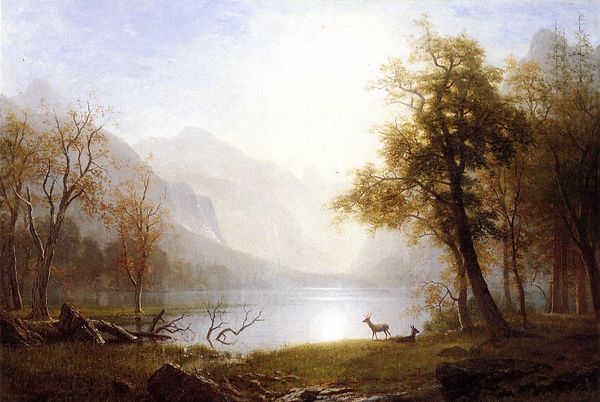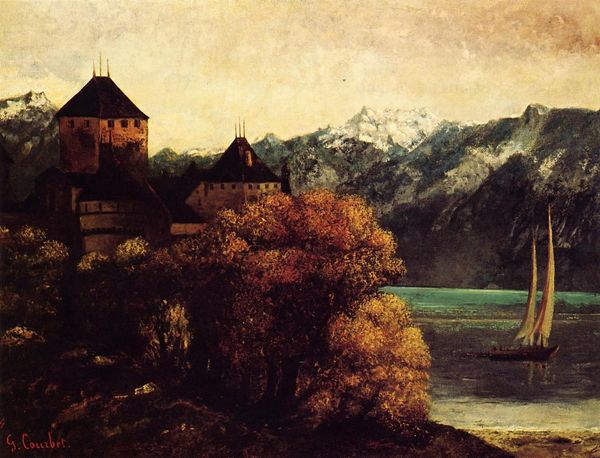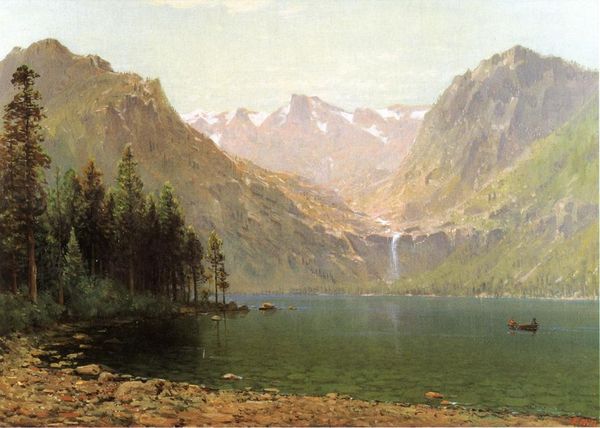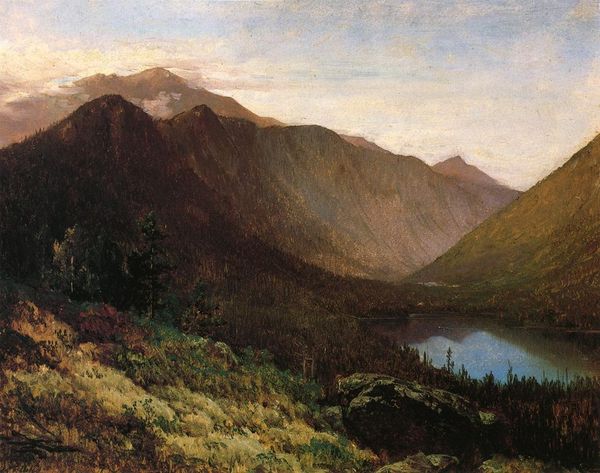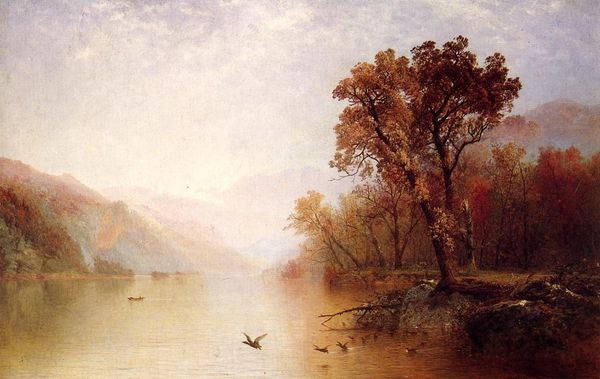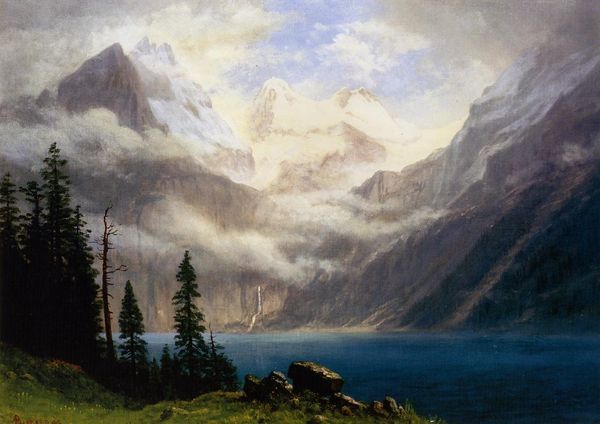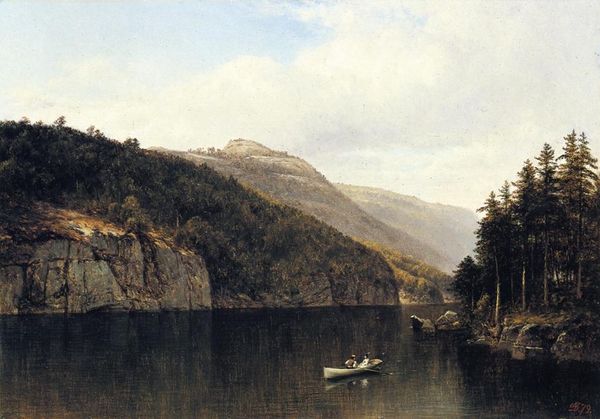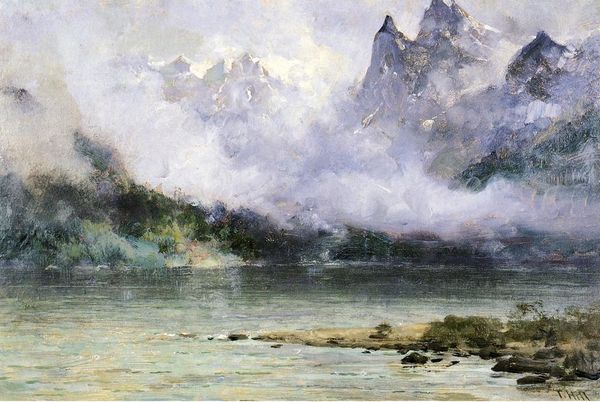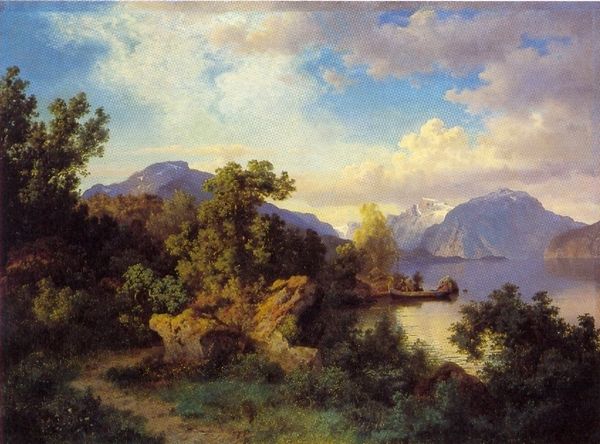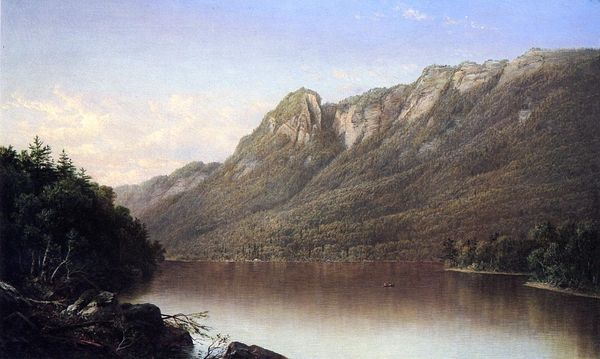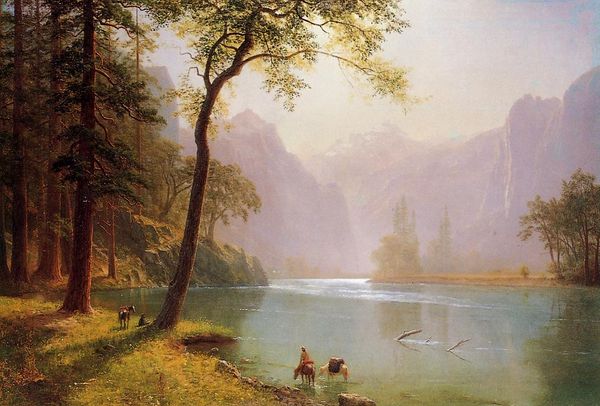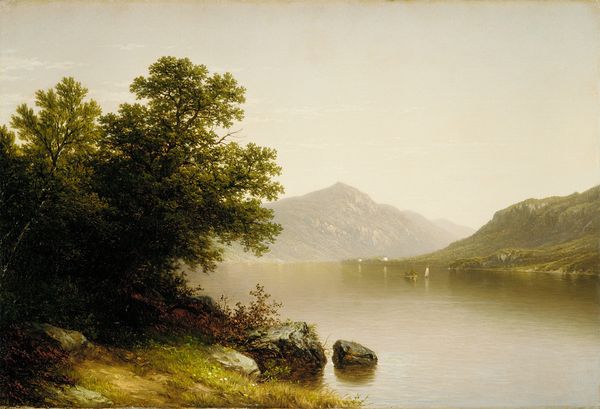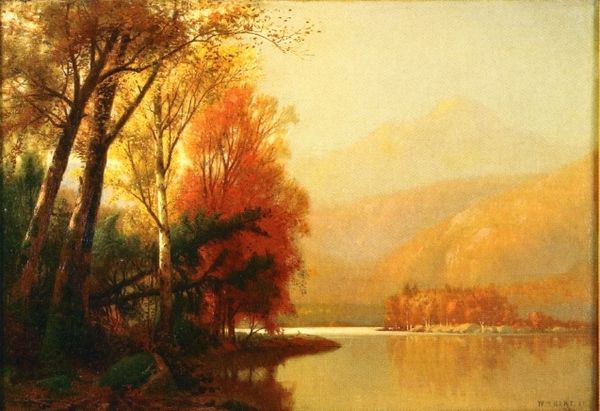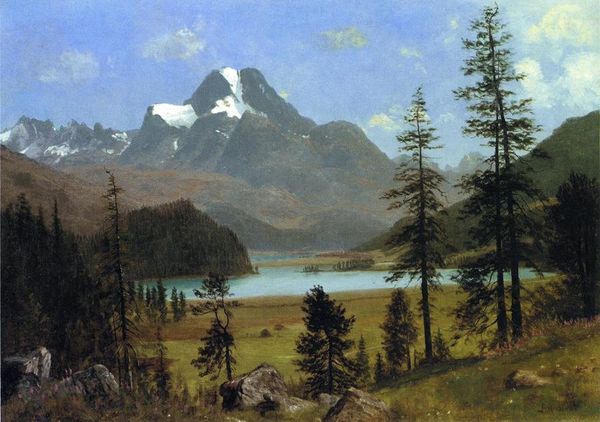
Dimensions: 65 x 81 cm
Copyright: Public domain
Curator: Gustave Courbet's "Lake Leman," painted in 1874. A sweeping landscape with the titular lake dominating the scene, framed by the Alps in the distance. Editor: The overall tone feels very subdued. The color palette is soft, dominated by cool blues and muted greens. The single sailboat seems almost dwarfed by the sheer scale of the natural world, suggesting solitude and perhaps the power of nature. Curator: Courbet was quite interested in painting "en plein air" which allowed for a direct engagement with the materials in a real-world setting. It facilitated a specific kind of observation crucial for capturing fleeting moments. Note how the application of paint seems deliberate and emphasizes the textures of the water and the rugged mountains. There is this commitment to representing what he sees. Editor: The mountains, though distant, possess a profound symbolic weight. Peaks have long stood for aspiration, obstacles, the sublime. They also speak to a history—geological, cultural—embedded in the landscape itself. Then there’s that single boat... sailing, a classic symbol of life’s journey, but alone, fragile against the backdrop of monumental nature. Is there a commentary there, I wonder, about humanity's place? Curator: It’s interesting that you mention that; the context matters here. By 1874, Courbet had already spent time in prison for his role in the Paris Commune. How much did the materiality surrounding labor define what can and cannot be represented here? Editor: Ah, an astute point about the context. Did these trials define the type of symbolism that an artist was interested in showing to an audience at the time? Curator: That's what makes this type of artwork so potent; art in any media and mode, serves a function that is inevitably connected with social, economic, or even material circumstances. It's a reminder that artistic creation is always, in some way, shaped by its conditions of production. Editor: Well, looking at this, I now have a new appreciation of the intersection between personal stories and symbols and material forces behind an artwork. Thank you for sharing those perspectives. Curator: Likewise. Hopefully, listeners can see more clearly how social context affects both visual imagery and making decisions.
Comments
No comments
Be the first to comment and join the conversation on the ultimate creative platform.
